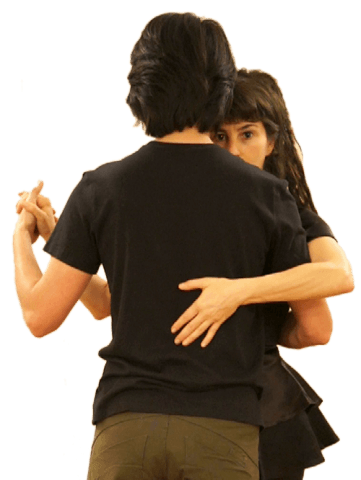Why are some of us so intent on putting down others’ way of dancing?
While encouraging entrants to celebrate their love of tango and have fun, the upcoming Australian Tango Dance Challenge “forbids” ganchos and lifting the legs (they must have meant to say feet) “above the knees.”
Why would a tango competition forbid moves that come to us from the rich improvisational history of the Golden Age of tango? Why would certain common moves used regularly in social tango around the world be dismissed by the program as “stage tango”?
There are several explanations.
[1] Myths and misconceptions that have acquired the status of unquestionable Authenticity, such as:
- ALL Authentic tango dance halls in Argentina are too crowded to allow for extension of the legs.
- The tradition of Argentine Tango did not include these moves, they were invented in the 1990s. Not true, the so-called “nuevo” investigators of the 1990s did not invent any new moves. Ganchos, volcadas, colgadas, etc. were used by Petróleo and others of the Golden Age.
- The deep emotional experience of connection can only be experienced in close embrace.
- These moves cannot be executed safely.
- Tango can be practiced in a way that is historically pure, untainted, and unchanging. (As Carolyn Merritt points out in her excellent new book, which I have reviewed here, tango has always included “fusion, innovation, and foreign influence“ [32].)
[2] In 1995, Susana Miller et. al. of El Beso began an international marketing campaign to promote what they called “milonguero-style” tango as the only authentic tango. They have unfortunately been successful in promoting among foreigners an intense sectarianism around issues of the closeness of the embrace, the distance between the follower’s foot and the floor, and a repudiation (as “inauthentic” or “not appropriate for social dancing”) of certain movements which have been part of the social tango lexicon for more than 50 years. (This sectarianism is even having influence in Argentina, where aspiring young professionals feel the need to present themselves and their dance in the stylistic terms that foreign customers insist upon.)
[3] Anti-youthism: In many cultural contexts around the world and in history, the old guard has tried to hold on to power as young people come with power, ideas, and agility. The establishment always tries to delegitimize the youngsters, calling them unorthodox, heretical, destructive, dangerous, disrespectful…
[4] Bigotry: “One who is strongly partial to one’s own group, religion, race, or politics and is intolerant of those who differ…From the 15th century on Old French bigot meant “an excessively devoted or hypocritical person. Bigot is first recorded in English in 1598 with the sense ‘a superstitious hypocrite’.”
- Why would organizers invite visiting teachers well known to include these “forbidden” moves in their social dance exhibitions and then discourage students to use these moves. Look but don’t touch? What’s the point?
- Why is it that people (young and not so young) who enjoy acrobatic moves and open embrace are never heard putting down people who enjoy sedate close embrace and are even seen enjoying it themselves? Why is this sectarianism one-way? Why do we see respect and honor from the young guard for the older generation, but not the reverse?
- Why is it that sectarians deny what they see with their own eyes (many “nuevo” dancers spend most of their time in close embrace, many “salon” dancers use ganchos when dancing socially…) and promote dichotomous divisions?
Others of us are resistant to even using the term “style” because our experience of tango dancing includes many kinds of movements and relationships, and we are concerned that styles are becoming sects.














